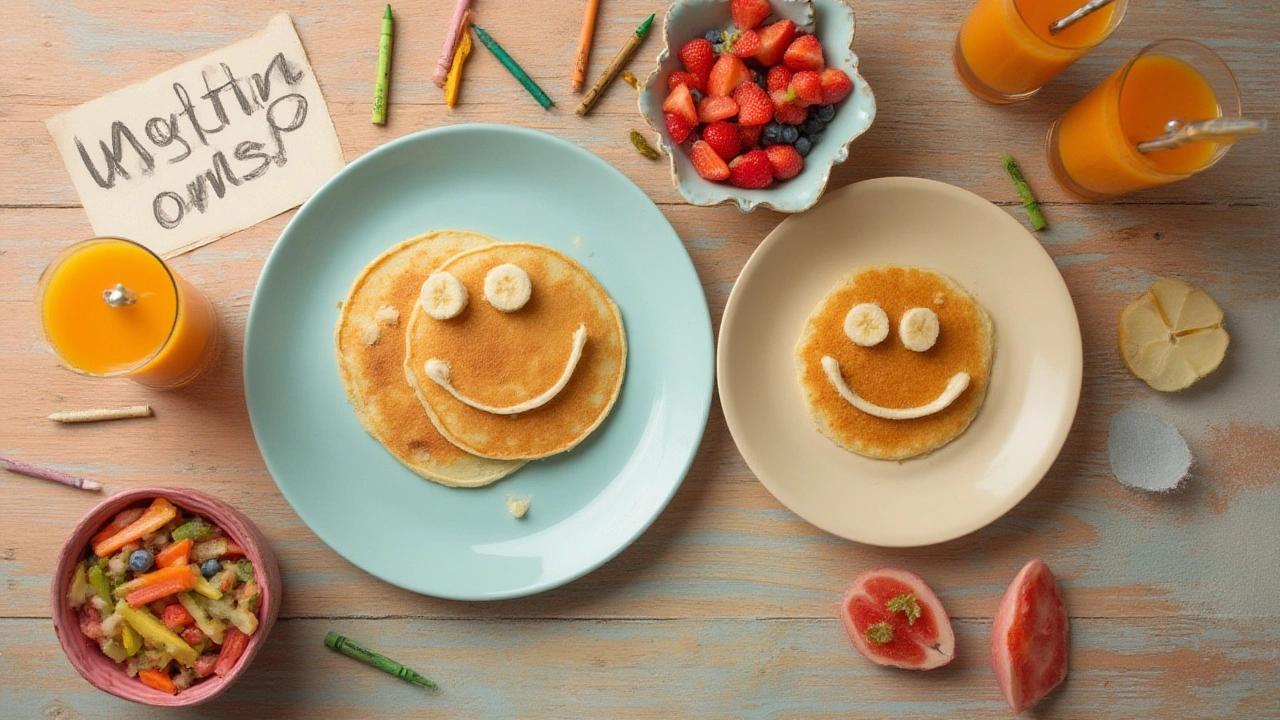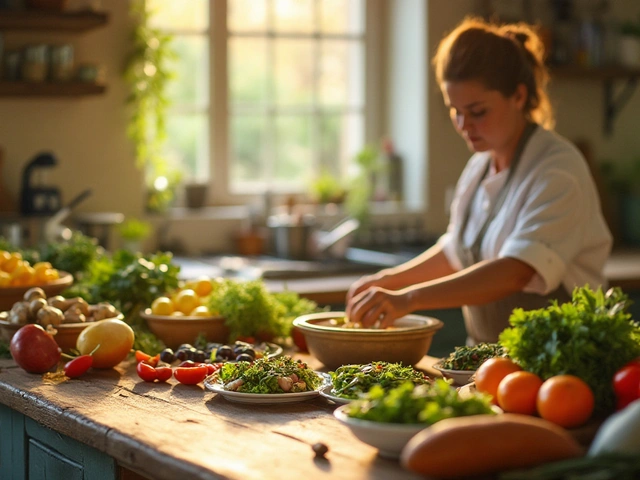If you’ve ever tried reasoning with a seven-year-old about chia pudding at 7 a.m., you probably know breakfast battles too well. Even though breakfast is hyped as the “most important meal of the day,” it’s also the one parents struggle with most. Kids want flavor, fun, and sometimes a little rebellion. Meanwhile, as parents, we want nutrients, real food, and a shot at fewer sugar crashes mid-morning. It can feel like these wants never meet in the middle—yet they can, and they do. The trick is serving up healthy breakfast recipes that actually get your kids excited about mornings. Sounds impossible? Turns out, science (and a few creative hacks) say it’s not.
Why Healthy Breakfasts Matter for Kids
Skipping breakfast or grabbing something sugary on the way out the door quickly turns mornings into meltdowns. But not all breakfasts are created equal, especially for kids who need both energy and nutrients to fuel their day. A 2023 CDC survey found that children who eat balanced breakfasts consistently perform better on memory and attention tests at school than those who skip it or eat mainly processed foods. That means the right morning meal can help your kids pay attention, stay calmer, and even remember more at school.
Here’s why: When kids eat breakfast, their metabolism wakes up, blood sugar levels stabilize, and they get essential nutrients like iron, calcium, fiber, and vitamins A, C, and D. Fiber helps curb those ‘I’m hungry!’ complaints before lunch. Protein prevents energy crashes. Whole grains feed their busy brains, which use about half of the body’s energy! Doctors recommend kids get at least 25-30% of their daily calories from breakfast. Yet, in the US, about 1 in 5 kids skip breakfast altogether, while others often rely on processed pastries or sugary cereals that spike their blood sugar and leave them cranky an hour later.
There’s another catch: kids’ taste buds differ from adults. They often like plain, sweet, or simple flavors, and are more sensitive to bitter foods or overly mixed-up textures. So, plain oats may not cut it; fun toppings or shapes matter. Quick-fix sugary options, though easy, can increase risks of obesity and type 2 diabetes in the long run. Understanding these needs is the first step in cooking a breakfast everyone will actually eat.
Creative Breakfast Ideas to Get Kids Excited
The answer to peaceful mornings: make breakfast interactive and visually appealing, without spending hours like a contestant on a food competition show. If you can wield a cookie cutter, a blender, or a muffin pan, you’re set. Think DIY yogurt parfaits, fruit-topped oatmeal, or breakfast tacos—each can be easily customized by your kids. Letting them help make their meal can increase willingness to try new things. In one study, kids involved with breakfast prep were about 30% more likely to eat vegetables included in the dish.
Try fun twists on classic favorites. For pancakes, use whole wheat flour and add mashed banana or grated carrot to the batter—no kid will taste the stealthy veggies. Pancake molds or animal-shaped cookie cutters (place them on the pan while pouring batter) instantly make them more appealing. For a no-fuss, protein-rich option, roll up scrambled eggs, cheese, and diced veggies in a whole wheat tortilla. Kids can dip in salsa or mild guacamole. Overnight oats with chia seeds, berries, and a swirl of honey can be prepped in jars so kids can shake and choose their toppings in the morning.
Don’t forget the power of color: bright berries, clementine segments, kiwi slices, and even a sprinkle of nuts look tempting and add nutrients. Try “rainbow toast” by blending Greek yogurt with berries or spinach for natural color, then let kids spread it on whole grain bread with fruit faces on top. You’ll see more smiles than protests.

Delicious, Nutritious Breakfast Recipes Your Kids Will Love
Ready to try something new? Here are a few breakfast recipes that are both kid-approved and packed with the good stuff. Each recipe balances fiber, protein, and healthy fats for steady energy and full bellies.
- Build-Your-Own Parfait: Start with 3/4 cup plain Greek yogurt (or dairy-free alternative). Let your child layer their own with frozen or fresh mixed berries, a sprinkle of low-sugar granola, and a drizzle of honey. Add pumpkin seeds or chopped walnuts for crunch. The key is choice—kids love seeing (and controlling) what goes in their breakfast.
- Veggie-Packed Egg Muffins: Whisk together 6 eggs, a splash of milk, chopped bell pepper, spinach, and feta cheese. Pour into silicone muffin cups and bake at 350°F for 18-20 minutes. These store well in the fridge, so your child can grab-and-go (or eat cold). Serve with whole grain toast or a cut-up fruit salad.
- Banana Oat Pancakes: Mash 2 ripe bananas, mix with 2 eggs and 1/2 cup rolled oats. Add a pinch of cinnamon. Pour small rounds onto a greased pan. They cook up in minutes and need no syrup, just top with berries or a dust of powdered sugar.
- Apple Sandwiches: Core and slice apples into thick rounds. Spread one side with peanut butter, sprinkle with raisins or mini chocolate chips, then top with another apple slice. Each "sandwich" offers vitamins and fiber for lasting energy, and you skip the bread if allergies are an issue.
- Breakfast Quesadillas: Fill a whole grain tortilla with shredded cheese, scrambled eggs, and black beans. Fold in half and cook until crispy. Cut into triangles for little hands. Serve with salsa or a dollop of Greek yogurt.
Here’s a quick look at the nutrition benefits of these recipes:
| Recipe | Main Nutrients | Time to Make |
|---|---|---|
| Parfait | Protein, calcium, probiotics | 5 min |
| Egg Muffins | Protein, vitamin A, iron | 25 min (prep + bake) |
| Oat Pancakes | Fiber, potassium, protein | 10 min |
| Apple Sandwiches | Vitamin C, fiber, healthy fats | 7 min |
| Quesadillas | Protein, fiber, B vitamins | 10 min |
The best part: all these breakfasts can be prepped ahead or made in less than 15 minutes, so you’re not running late on school mornings.
Make-Ahead Tips for Busy Mornings
Not a morning person? You’re in good company. Most parents aren’t, so savvy prep is your friend. Think batch-cooking on weekends, freezer-friendly options, and breakfast bars that rival any store-bought version.
Here’s what helps: Make a batch of egg muffins, let them cool, and store in an airtight container in the fridge. They reheat in 30 seconds and taste good cold, too. Overnight oats keep for up to four days in sealed jars. You can blend smoothie packs (fruit and spinach in freezer bags) ahead of time, so every morning you just add milk and blitz.
Healthy breakfast burritos or quesadillas can be assembled, wrapped in foil, and frozen. To reheat, pop them in a toaster oven or microwave. Homemade granola bars are a big win—just mix peanut butter, oats, flaxseed, a touch of honey, and press into a pan. Let cool, cut, and keep on standby for mornings when you’re running out the door. Sunday night prep means you can sit down to coffee most weekdays and not scramble for a plan at the last minute.

Secrets for Getting Picky Eaters to Try Healthy Breakfasts
Picky eating is normal, especially for kids who crave predictability. So, how can you sneak in healthy foods without turning breakfast into a battlefield? The answer: offer choice, make it a game, and show rather than tell.
Let your child pick their favorite fruit for toppings, or choose between two recipes. Research from the University of Alberta shows that kids given just two healthy options are up to twice as likely to try both, compared to when handed only one. Plating matters, too: a smiley face made from blueberries on a pancake, or a rainbow bowl of fruit, is irresistible. Even something as simple as switching up the plate or cup (“Want a superhero bowl today?”) can make a difference.
If you want to sneak in nutrients, blend leafy greens or cauliflower into smoothies—a little goes a long way. Don’t hide everything, though. Involve your kids in the kitchen: even stirring, pouring, or choosing toppings gives them “ownership” over the meal. Praise adventure (“Wow, you tried kiwi!”) instead of pleading or bribing. It also helps to keep breakfast positive—if a new recipe flops, no pressure. Offer one known favorite alongside anything new, and rotate options so breakfast never feels like a chore.
Remember, taste preferences can change with exposure. Some kids need up to ten tries before a new food is accepted. Be patient, keep it light, and know you’re boosting your child’s focus, mood, and strength every time that breakfast plate gets just a little more colorful and balanced.
The wild ride of parenting is challenging enough. Start small with one new recipe each week, play with toppings and colors, and make mornings something to look forward to—not just survive. Bright, healthy breakfasts can make the difference, not just for your kids’ health, but for your sanity, too.






